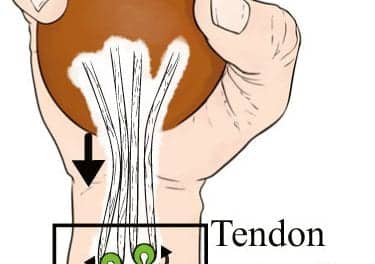Problems with the inner ear can push some to their outer limits. To explore how problems in the inner ear can affect balance, especially in older patients, [removed]Craig Formby[/removed], PhD, of The University of Alabama, Tuscaloosa, Ala, has developed the Roto-Tilt Chair, says a statement released by the university.
The chair is a one-of-a-kind invention that rotates, twirls, and eventually will spin test subjects and patients head over heel so researchers can gather data on how the inner ear contributes to balance and why the system sometimes goes wrong, says the statement.
Formby, distinguished graduate research professor in The University of Alabama’s department of communicative disorders, is beginning a years-long process of first testing, then using the chair for the benefit of people who have trouble balancing. The custom-designed Roto-Tilt Chair, built to Formby’s specifications by Neuro Kinetics Inc, Pittsburgh, is installed in the AIME Building at UA. Specific motions and positions of the chair can be used to test particular parts of their vestibular system, and visual displays can be presented to assess related eye movement disorders.
Dysfunction of the vestibular inner ear plays a role in an estimated half of all fall-related injuries and deaths among senior citizens in the United States, says the statement. Falls are the leading cause of fatal and nonfatal injuries among senior Americans, Formby says, and historical data indicate that at least one-third of all Americans age 65 and older will suffer a fall this year.
Formby said in the statement that the enormous societal health-care problem and projected future expenses, which are estimated to top $40 billion by 2020, and the fact that most elderly fall injuries and related deaths are preventable, have motivated and intensified national efforts toward an all-out attack on elder falls.
Formby, who, in addition to his College of Arts and Sciences position also has appointments in the College of Engineering and School of Medicine at UA, is a National Institutes of Health-funded investigator.
With the new chair, Formby can evaluate a sitting patient by spinning the chair, by rapidly tilting the chair, or by combining the spinning and tilting actions to achieve specific motions or positions that activate the individual inner ear structures. Researchers can monitor, through the movements of the chair and the eyes, how the patients are dealing with the two basic sensory systems that control their balance: the visual and vestibular systems.
These two systems must work together: The visual system receives input from the eye, while the vestibular system, through the intricate workings of the fluid-filled canals and sensory structures within the inner ear, senses changes in head position that are critical for maintaining balance as the eyes focus on an image.
The question is, when you’re dealing with something as complicated as the inner ear, with its many mechanisms, how do you pinpoint what’s not working properly?
Formby said in the statement that the way the chair is built, the machine can assess all three planes of motion – yaw, roll, and pitch, to use pilot’s terms. Yaw is rotating movement like that of the spinning office chair, roll is sideways rotation, and pitch sends you head-over-heels, he added.
Formby began working on the chair about eight years ago at the University of Maryland School of Medicine. Funding for the machine has come from both the National Institutes of Health and UA. The Roto-Tilt Chair is installed at UA’s AIME Building.
The chair will be a national and even international resource, as UA engineers will work on new applications for it with clinical colleagues from the UA School of Medicine and UAB, where Formby holds an affiliate appointment in otolaryngology.
[Source: University of Alabama]



